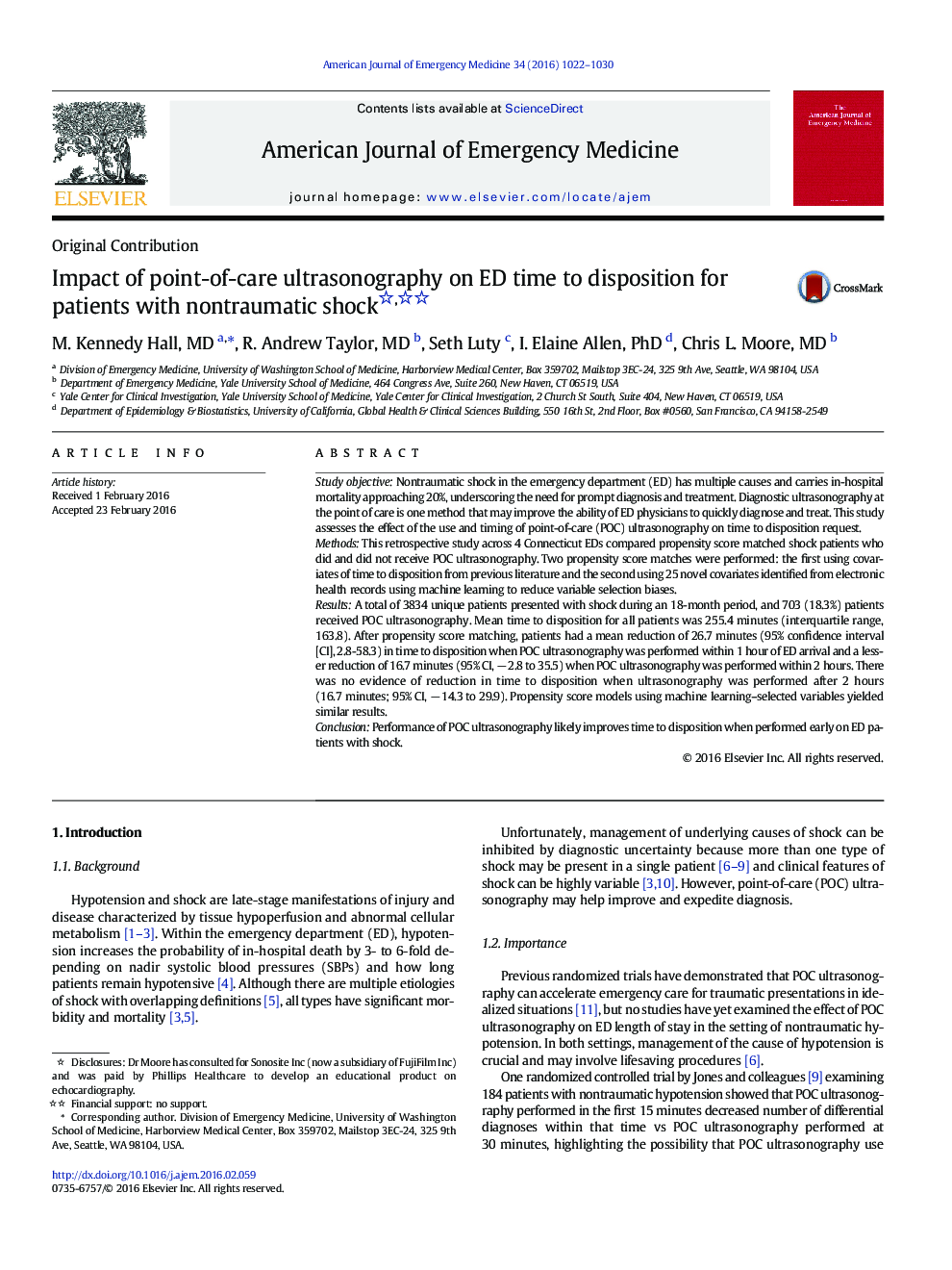| Article ID | Journal | Published Year | Pages | File Type |
|---|---|---|---|---|
| 3223118 | The American Journal of Emergency Medicine | 2016 | 9 Pages |
Study objectiveNontraumatic shock in the emergency department (ED) has multiple causes and carries in-hospital mortality approaching 20%, underscoring the need for prompt diagnosis and treatment. Diagnostic ultrasonography at the point of care is one method that may improve the ability of ED physicians to quickly diagnose and treat. This study assesses the effect of the use and timing of point-of-care (POC) ultrasonography on time to disposition request.MethodsThis retrospective study across 4 Connecticut EDs compared propensity score matched shock patients who did and did not receive POC ultrasonography. Two propensity score matches were performed: the first using covariates of time to disposition from previous literature and the second using 25 novel covariates identified from electronic health records using machine learning to reduce variable selection biases.ResultsA total of 3834 unique patients presented with shock during an 18-month period, and 703 (18.3%) patients received POC ultrasonography. Mean time to disposition for all patients was 255.4 minutes (interquartile range, 163.8). After propensity score matching, patients had a mean reduction of 26.7 minutes (95% confidence interval [CI], 2.8-58.3) in time to disposition when POC ultrasonography was performed within 1 hour of ED arrival and a lesser reduction of 16.7 minutes (95% CI, − 2.8 to 35.5) when POC ultrasonography was performed within 2 hours. There was no evidence of reduction in time to disposition when ultrasonography was performed after 2 hours (16.7 minutes; 95% CI, − 14.3 to 29.9). Propensity score models using machine learning–selected variables yielded similar results.ConclusionPerformance of POC ultrasonography likely improves time to disposition when performed early on ED patients with shock.
